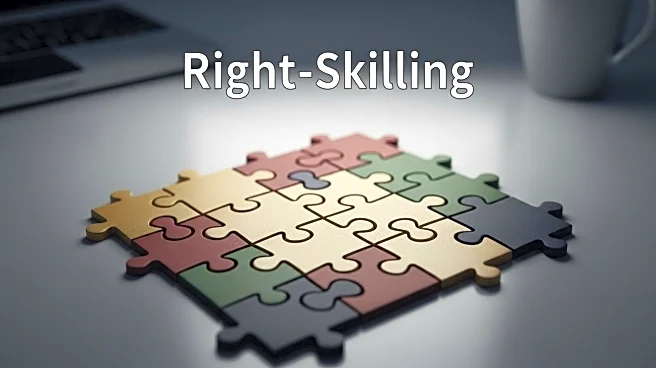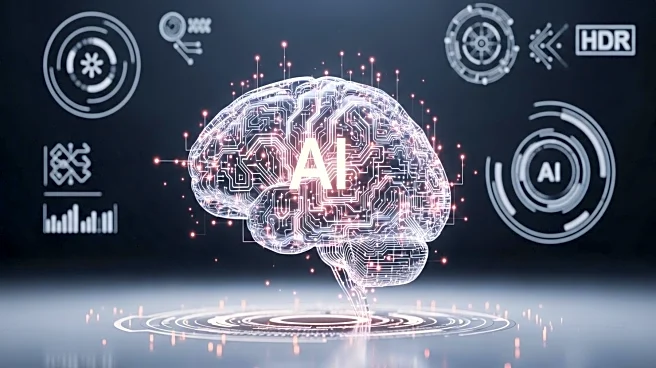What's Happening?
As industries evolve with technological advancements, companies are increasingly facing a skills gap, where the workforce's abilities do not align with current job demands. A significant portion of recent graduates, 52%, are underemployed within their first year, and many middle-skills credentials do not match available job opportunities. In response, organizations are adopting 'right-skilling'—a strategic approach to align job-specific education with industry needs. This method transforms learning and development into a crucial business driver. For instance, a Fortune 500 manufacturing company developed a leadership program focusing on finance, supply chain management, and strategic thinking, resulting in 84% of participants being on track for promotion. Right-skilling programs are being implemented across various sectors, including healthcare, where they have led to significant cost savings and improved employee performance.
Why It's Important?
The adoption of right-skilling is crucial for maintaining a competitive edge in the rapidly changing business landscape. By aligning employee skills with industry demands, companies can address immediate business challenges and build long-term resilience. This approach not only helps in filling current job vacancies but also prepares the workforce for future roles, thereby reducing the stress and performance issues associated with skill mismatches. Organizations that invest in right-skilling are likely to see improved employee satisfaction, reduced turnover, and enhanced operational efficiency. As businesses strive to do more with less, right-skilling offers a sustainable solution to talent development, ensuring that companies can adapt to technological changes and remain competitive.
What's Next?
Organizations are expected to continue integrating right-skilling into their workforce development strategies. This involves creating personalized learning journeys that connect educational investments with career growth opportunities. Companies may develop adaptable frameworks that combine foundational content with industry-specific applications, allowing employees to transition into new roles seamlessly. As more businesses recognize the value of right-skilling, there may be increased collaboration with educational institutions to design programs that meet evolving industry needs. The focus will likely be on creating learning ecosystems that continuously develop the capabilities required for business success.
Beyond the Headlines
The shift towards right-skilling highlights a broader trend in workforce development, where traditional education models are being re-evaluated. This approach emphasizes the importance of lifelong learning and adaptability in the modern job market. It also raises questions about the role of higher education institutions in preparing students for the workforce and how they can better align their curricula with industry needs. Additionally, right-skilling may influence public policy, as governments seek to support workforce development initiatives that enhance national competitiveness.











